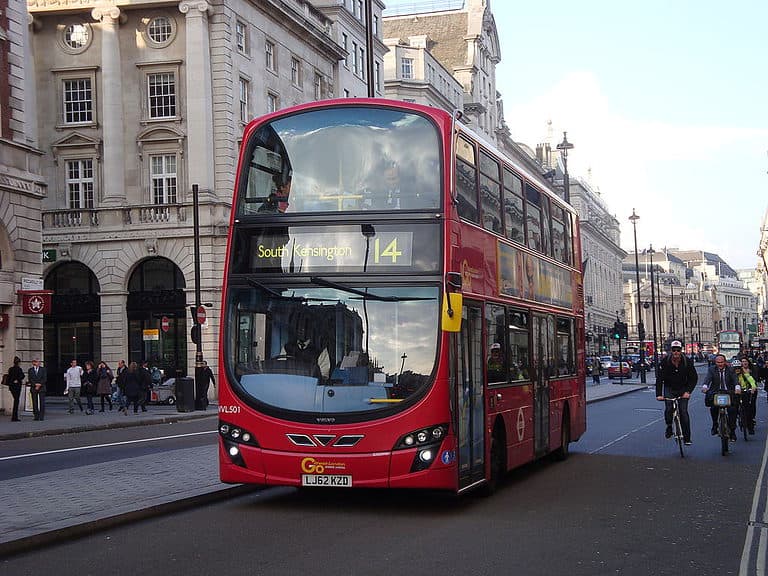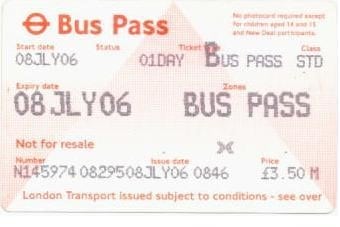This post is a guide to riding the buses in London, including how to pay your fare and other helpful planning tips.
Bus travel in London is well worth considering during your travels in the city.
The buses are easy to take and run 24 hours a day.
The London bus network covers the entirety of the city too and gets you to places the tube might not reach.
And of course, you get a great view of this gorgeous city as you pass by many of the most well-known sights in London.
In fact, if you decide to do this, we have a self-guided bus tour that takes you past major icons like Westminster Abbey, Trafalgar Square, Covent Garden, and more.
Although there is a lot of information on this page, know that once your decisions are made about how you want to pay for your fare, the rest is rather easy.
There are apps to help you with your route planning, and we’ve listed some travel helpful tips below.
Within only a few trips you’ll be an old hand at traveling by bus throughout London.
HOW TO PAY FOR YOUR FARE
You can pay for a bus ride by using a contactless card, a Visitor Oyster card, an Oyster Card, or a Travelcard.
You can’t pay for a bus ride with cash.
Contactless Cards
These are credit or debit cards (or devices) that can be tapped on a reader inside the bus to pay for a trip. On buses, you tap as soon as you board and there is no need to tap again as you alight.
Your bank card needs to show this symbol on it to tell whether it can make a contactless payment:
Credit or debit cards from outside the UK that sometimes allow contactless purchases are the AMEX (American Express), Mastercard, Maestro, Visa, and V Pay cards.
Note that it’s best to look into whether your bank will charge a transaction fee if you use this method.
Contactless cards are subject to the same price capping as an Oyster Card, so you never pay more than you would have spent had you purchased a daily travel card.
You are also able to take advantage of the 'Hopper' fare.
However, you won't get the same discounts available with the Visitor Oyster Card.
Oyster Cards
An Oyster Card is a plastic smart card, which is used to store money for rides throughout the London public transport system.
It also gives the holder *discounts on some attractions, restaurants, entertainment venues, and more.
There are two kinds of cards, the Visitor Oyster Card and the regular Oyster Card, both of which function fairly similarly.
Each is a pay-as-you-go pass, meaning your card is charged each time you make a trip, depending on the zone (there are 9 of them) and whether it is peak or off-peak time.
It also caps the fares on trips taken within a single day, making the cost cheaper than single-ticket purchases.
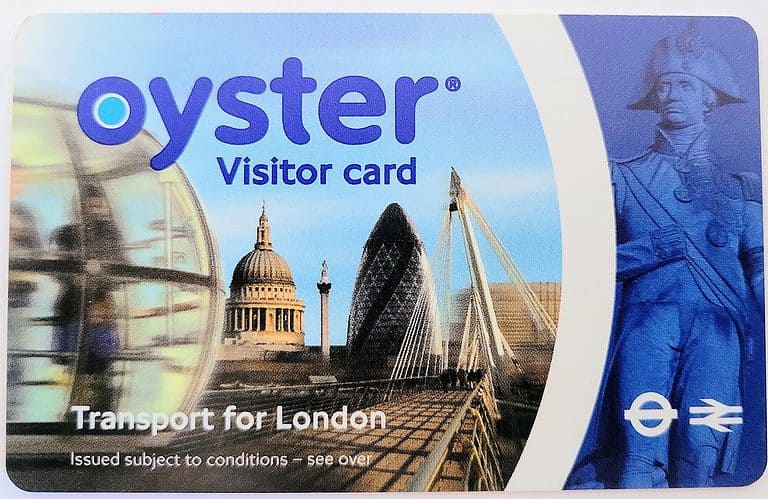
Both cards cover rides on buses, trams, the London Underground (Tube), DLR, London Overground, TFL Rail, most National Rail services in London, Emirates Air Line cable car, and River Bus services (MBNA Thames Clippers).
Each rider needs their own card, meaning a family cannot share a single card.
As far as costs go, there is a cost to buy the card itself, currently £7.00, in addition to the cost of whatever you put on the card.
But the card never expires, and you can top it up whenever you want to or need to.
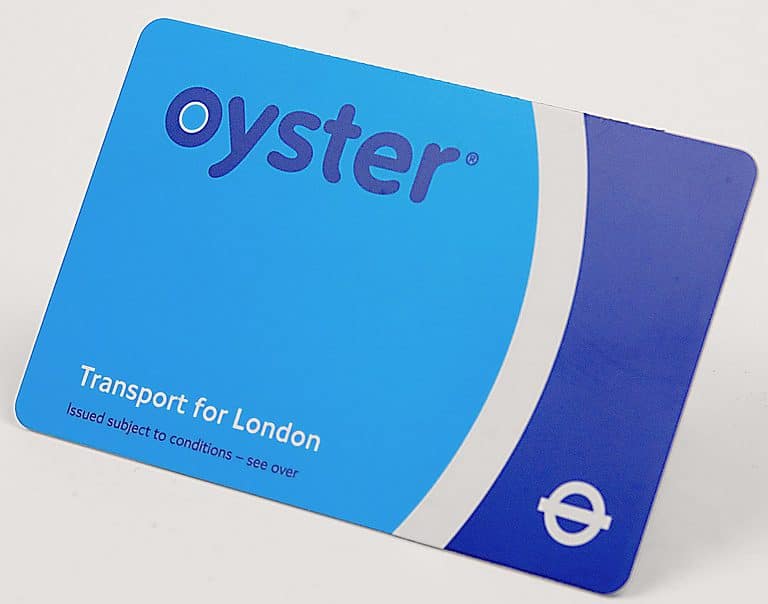
Speaking of topping it up, the card can be filled on an app, at over 4,000 local shops called Oyster Ticket Stops, at visitor Centres, at kiosks in tube stations, and many other places.
And for those who want to have the Oyster card on hand when they land at the airport, the Visitor Oyster Card can be purchased online and shipped to you ahead of time.
*None of the deals are that spectacular and you generally get much better discounts with a tourist attraction discount pass. The TurboPass, one of the tourist discount passes, includes a Visitor Oyster Card for free.
Travelcard
Travelcards are prepaid cards that give you unlimited access to specific zones within London.
Buses don't operate in "zones" and therefore any type of Travelcard will work on them.
However, if you are also taking other forms of transport, like the Tube, this might be of more use to you.
You can choose to either order these in advance (in which case you will be given a paper Travelcard) or you can buy them upon arrival (in which case you will be using a plastic Oyster Card with the travelcard loaded onto it).

There are many different lengths of Travelcards, but the most pertinent to visitors is the 1-Day Travelcard.
(There's also a 1 Month and 1-year ("annual") travelcard)
There's little reason you would ever need the 1-Day Travelcard as there is already a cap on Oyster Cards that limits the amount you can be charged per day.
In fact, you will likely lose money if you choose the 1-Day Travelcard over a regular Oyster unless you take advantage of the 2-for-1 tickets included.
Generally speaking, unless your accommodation is out in Zone 3 or higher, Zones 1-2 are probably all you will visit as a tourist.
FARES
There are a few fare options on London buses.
Fare Option 1: Hopper Fares
If a passenger plans to pay using a contactless credit/debit card or an Oyster Card, they are eligible for the Hopper fare.
The Hopper fare allows a rider to transfer from one bus (or tram) to another within an hour of touching your card for the first time. It also gives you unlimited journeys within that time frame.
You still have to tap your card each time you enter a new bus (or tram), but it does not charge you a second time.
As of December 2023, the cost of a Hopper fare is:
Adult: £1.75
Children aged 11-15: Discounted with Young Visitor Discount Oyster Card
Children aged 10 and under are Free with an adult
There is a daily cap for Hopper fares as well, which means that at most you’ll pay £4.95 per day.
For example, if you spend two hours on buses in the morning, one in the afternoon, and one in the evening, pricing will be capped once you reach £5.25.
The weekly cap is £24.70, so if you plan to be there for 5, 6, or 7 days, a Week Bus Pass that gets loaded on your Oyster card might be a good option.
But, it’s important to note that a One Week Bus Pass starts on a Monday and runs through a Sunday.
If you’re arriving on a Friday, for example, this would NOT be a good option as you would only get to use it for a few days.
Fare Option 2: One-Day Bus Pass
If you don’t have a contactless credit/debit card and don’t want to purchase an Oyster card, you can purchase a One Day Bus Pass.
The is a paper ticket that gives you unlimited travel until 4:29 AM the following day.
It can be purchased from many of the same places the Oyster card can be purchased at: Tube stations, Oyster card stores, train station ticket offices, and Transport for London Visitor Centres.
As of 2023, the cost for a One Day Bus Pass is £5.90.
PLANNING YOUR TRIP
There are a few resources that could help you plan your trip through London.
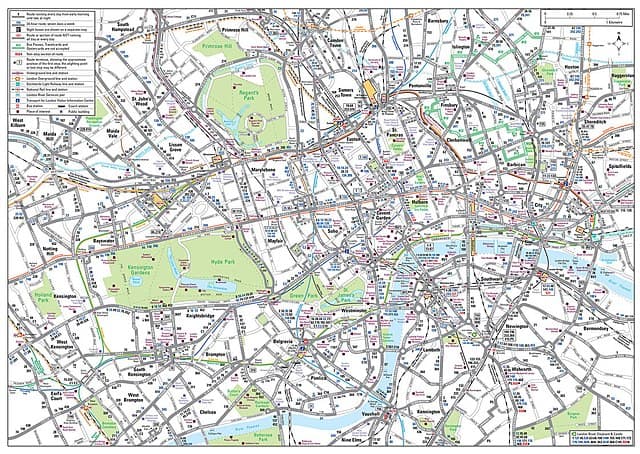
Plan a Journey Website
London Transports Plan A Journey website allows you to enter the names of well-known attractions or Tube stops.
It uses that info to build a route for you using public transport. It also provides options if you’d rather cycle or walk.
PDFs of Maps
For buses alone, you can download PDFs of specific bus maps (or spider maps, as they are called).
Examples of maps are London Bridge - Night Buses, London Zoo and Primrose Hill, and Tower of London.
These maps show you your destination and the various ways to get there including buses, the Tube, and National Rail.
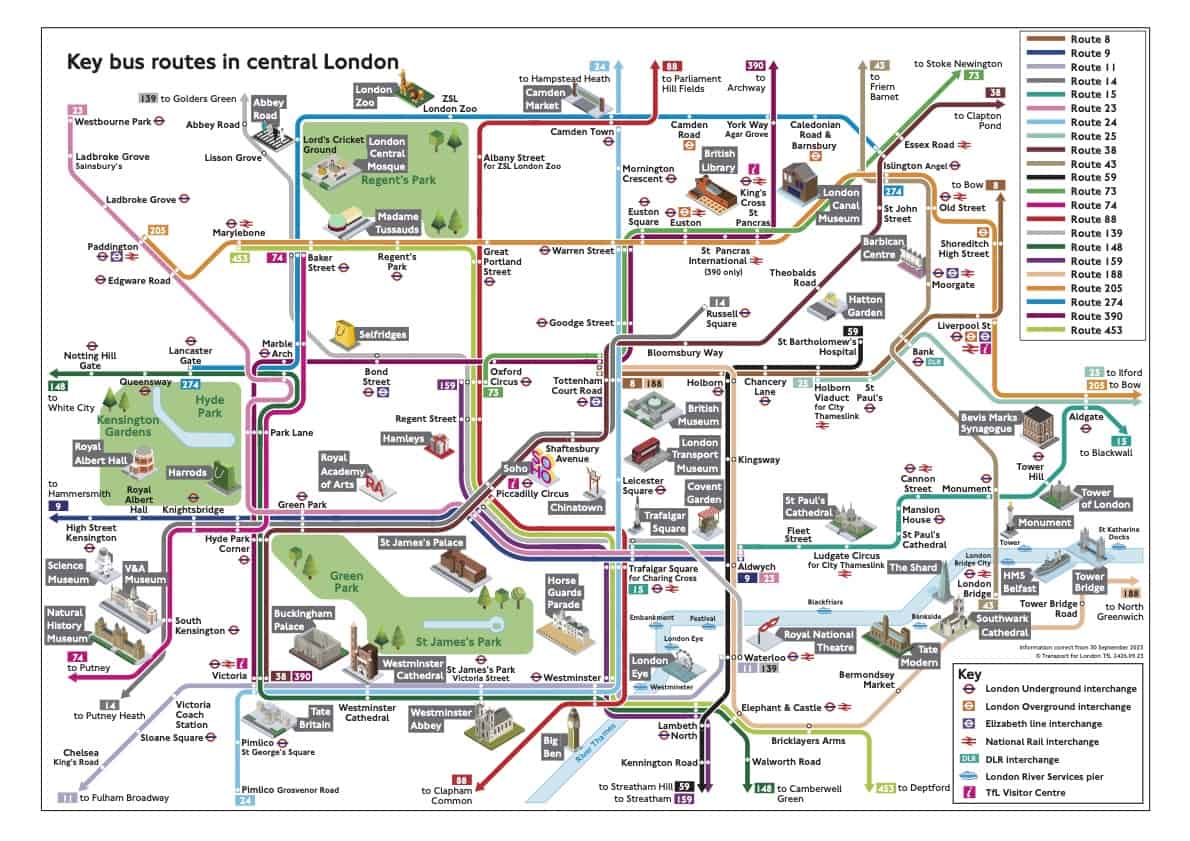
Apps
There are a few apps that might be worth downloading.
The TfL Go app allows you to plan your trip, see a live map of your route, and get updates on bus, train, and tram times.
The TfL Oyster and contactless app allows you to “top up or buy a ticket anytime” and check your journey history. It also warns you when your credit is low and your passes are expiring.
The Citymapper London app also gives you live up-to-the-minute updates on routes, offline maps, transport ticket prices, and more.
The Bus Times app will let you know when the next bus is arriving at any stop you wish to view.
TIPS FOR RIDING THE BUS
Here are some tips for riding a bus in London.
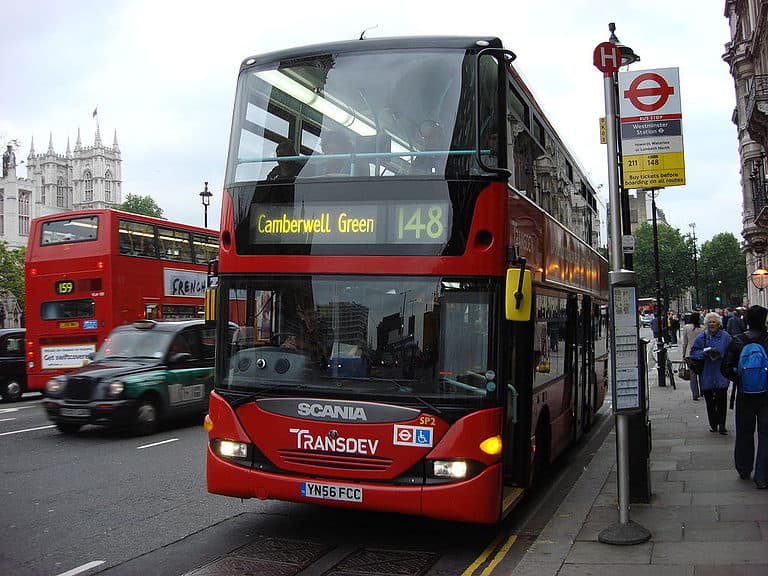
- Plan your trip ahead of time. It can’t hurt to check the timetables against the routes as not all buses run 24 hours a day. Look for an N on the routes that have night buses.
- When standing at a bus stop, look up at the sign above the stop. If it says “request stop” that tells you the bus will drive past unless you request that it stop. This is done by waving the bus down with your hand or a fare card. In fact, it can’t hurt to do this each time you see a bus that you want to get on.'This is done by waving the bus down with your hand or a fare card. In fact, it can’t hurt to do this each time you see a bus that you want to get on.
- Look at both the route number and the destination before boarding. Each stop may see a number of buses pulling up, so you’ll want to ensure you’re getting on the right one. This is where an app might be of help.
- Get on at the front of the bus and tap your card on the yellow card reader. You can depart the bus through the middle or back doors, but for the most part (and until all London buses are updated with card readers in the back) you’ll want to get in through the front.
- If you have multiple cards or devices for paying (for example, an iPhone and an Apple Watch) be sure to keep using the same one. Because of fare caps, you’ll want to ensure you’re not being overcharged if you swipe multiple times in a single day.
- Find your seat quickly. Bus drivers are in and out quickly, so if you’re not sitting, be sure to be holding on to a pole or handrail.
- If you’re traveling a route for sightseeing reasons, you may want to go up to the second level of the bus. The seats at the front of the second level give you the best view, making them popular. Just be sure to head downstairs quickly when you reach your stop (or even beforehand) because bus drivers will sometimes give you just seconds to get off.
- Avoid standing or sitting in the disability/pram (stroller) section at the front of the bus unless you need it. If you do, you will have to move if someone who needs it gets on.
- If buses are full, you can stand on the lower level. Just be sure to hold on to something.
- You’ll be able to follow the stops along the way on the digital signs inside the bus. There will also be an overhead announcement naming the stop. To get off at a certain stop, just before the bus reaches it, press the red stop button that you’ll see on poles around the bus.
- You don’t need to tap on your way out of buses or trams like you do on the Tube.
FUN FACTS ABOUT LONDON BUSES
Before you get down to the work of planning your bus trip, you might want to know a little bit about London buses.
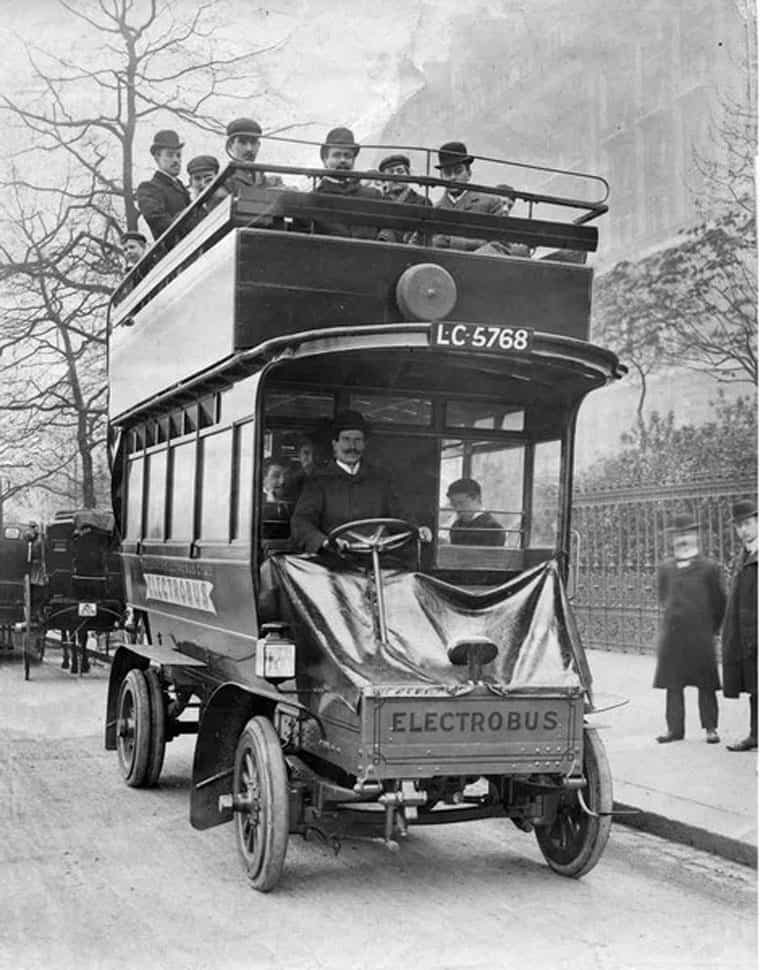
One of the most popular questions we get is:
Why are London buses red?
The very simple answer is that at one time, over 100 years ago, there were many companies with varying shades for their horse-drawn “buses”.
As many firms with differing schedules and rules were added to the city over the years, confusion reigned supreme.
In 1933 the London Passenger Transport Board (or London Transport) was formed in an attempt to bring all of the different companies together under one unified organization.
One of the companies, the London General Omnibus Company (est 1856) had a fleet of crimson buses, painted that way to make them stand out from others.
They were also the largest operator in the city so London Transport adopted their color scheme for all London buses.
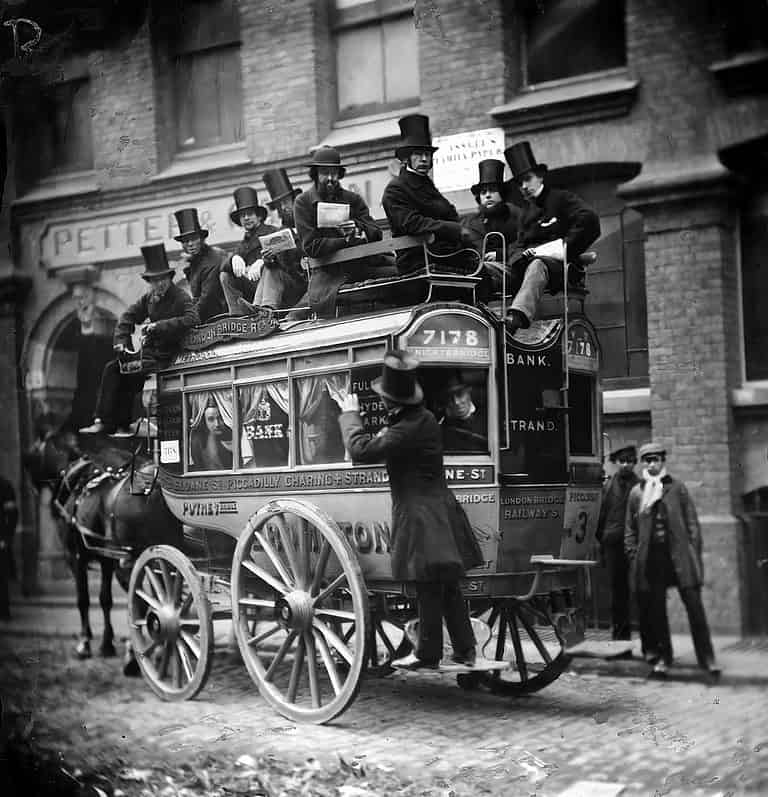
Another frequent question is:
Why are London buses double-decker?
The answer to this is simple. There was a need for more space to transport people.
In fact, this goes back quite a long way, as the first double-decker bus was actually a two-level horse-drawn carriage!
By the 1920s, London started using the non-horse version of the double-decker bus we see today.
It remains a better fit for a city with tight streets, and one not often seen in other countries.
Today the red double-decker bus is a symbol of London, as well known to outsiders as the red telephone booth and black cab.







